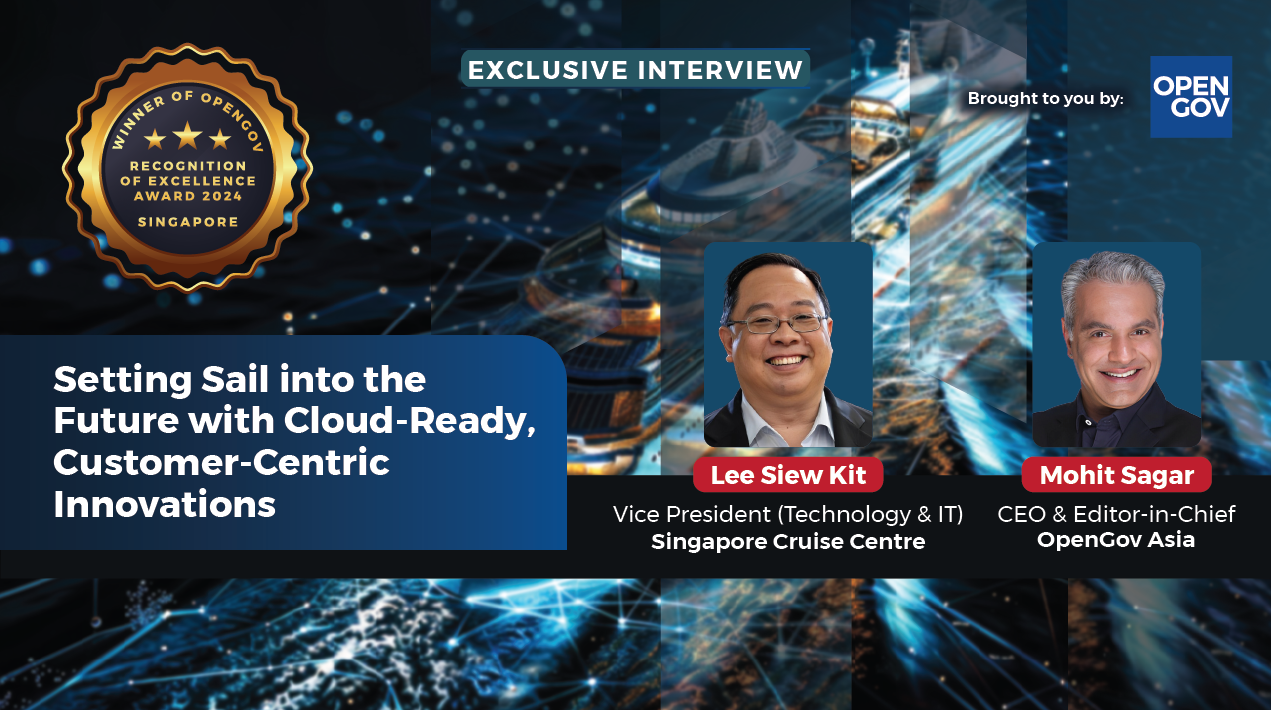
Founded
in 1963, the Institute of Electrical and
Electronics Engineers (IEEE) is the world’s largest technical professional
organisation dedicated to advancing technology for the benefit of humanity.
Today, IEEE has more than 423,000 members in over 160 countries who are primarily
engineers, scientists, and allied professionals in electrical and computer sciences,
engineering, and related disciplines.
Recently,
OpenGov had the pleasure the speak to Professor Michael Condry, President of Technology and Engineering Management Society (TEMS), to understand how IEEE TEMS as a professional
technical and engineering society serves as a bridge between the academia and
industry. Prof Condry is also the Co-Founder and Vice-Chairman of the Board,
Global Alliance of Innovators and Entrepreneurs.

Professor
Condry first shared with OpenGov that most of the IEEE members are from the
research community, which includes both industrial research or academic
research.
As a
Council of IEEE, the IEEE TEMS has been active in supporting members’ career
growth and fostering knowledge transfer. The mission of IEEE TEMS is to tackle
one of the major recurring problems in technology and innovation – the gap
between academic research and commercial application by the industry.
Such
a gap may be in the forms of challenges in: (1) knowledge transfer, (2) alignment
of academic research interest with industry needs, and (3) shortage of talent
pool to meet industries’ needs for skilled workforce.
In
his role as the President of IEEE TEMS, Prof Condry helps the academic
community to bring their research effort to reality through industrial
application and commercialisation.
Prof
Condry’s firm belief in the potentials of academia-industry collaboration is
partly the result of his rich career experience in the industry, including his
position as the CTO of Global Ecosystem Development Division at Intel
Corporation before his retirement.
“Technology
is moving at a quantum speed. The first processor I designed was a Bellmac-32
that used 3.5 micron technology. That was considered the cutting-edge technology
in the 1980s. When I left Intel, 7 nanometer (nm) was operating. This is the
speed in which things are moving,” he shared.
The
fast-changing technology landscape is presenting both opportunities and
challenges to the business community.
On
one hand, the industry benefits from innovative solutions that help optimise
their operations, solve the technical challenges they face and develop new
innovative products. As a non-profit group to bridge between industry and
academia, IEEE TEMS aims to leverage on IEEE resources and make research
studies accessible and easy-to-read.
“We
are going to change some of our publications so that instead of being neat
research articles, they can be used as directions that executives can easily
read in two or three pages,” Prof Condry shared.
However,
on the other hand, technological advancement means that companies face
increasing competition – companies must be able to keep up with the pace of
technology before getting left behind.
“In
today’s world, if you are a leader trying to get a business going, you may have
a vision of what you want to do, but you will also need technology to help you
realise that vision,” said Prof Condry.
For
example, if a company wants to deploy sensors to determine the chemicals in the
soil, it does not need to develop or set up all the technology, such as cloud
infrastructure, on its own.
“While
the tradition has been to hire somebody and go through a long process of
research and product development, if a company in today’s world follows the
same procedure, by the time they got those things done, somebody else’s product
is already in the market,” said Prof Condry.
Given
his strong background in technology development, Prof Condry decided to join
the IEEE TEMS and focus his efforts in building a platform to help the research
community engage the industry community and address real-world business
problems.
Over
the years, the research community has produced a phenomenal number of research
papers. Unfortunately, according to Prof Condry, many of the papers are not
read by the industry for which the results can be used.
Prof
Condry noted that when his organisation invites the industry community and “let
them talk about their problems”, what usually happens is that “researchers in
the audience would get up and explain the problem or even share the solution
that they have discovered”.
He
also cited his personal experience to illustrate that turning technical
concepts in research into real-life application is a rewarding recognition of
one’s hard work.
“I was
much more impressed that my papers were cited in hundreds of patents, rather
than how many technical citations I had. The fact that they cited my papers as
one of the bases of their patents, to me, that was much more rewarding,” he
shared.
At
the same time, IEEE TEMS believes in the power of cross-sectoral collaboration,
particularly in the technology landscape. According to Prof Condry, in today’s
world of technology, there will not be a “single isolated company that can solve
all the problems”.
“In
fact, some big tech leaders are suffering because their business models are
about ‘I own everything’, ‘I don’t co-operate’ and ‘I do everything in-house’.
For tech and social media companies trying to lead, they operate by a different
philosophy and they are moving much faster,” he said.
When
asked to explain this new philosophy that leading tech giants uphold, Prof
Condry pointed out that the new philosophy is rooted in its emphasis on
collaborations to forge partnerships and expanding customer base.
At
the same time, the new philosophy also has two other characteristics: (1) an
effort to flatten the traditional management ladder and (2) better technical
understanding among managers.
He
also stated that “the current system of intellectual property is very
challenged. Many corporate leaders unfortunately do not understand how simple
their technology is, overestimated its importance and get frustrated when
somebody copies it”.
“Technology
is moving so fast that there is no way for us to keep up with it. The only way
to keep up with it and make it work for all is to enable more co-operation. Without
a mechanism for co-operation, a one-company turf will eventually lead to
failure,” he reiterated.
Closer
to home, Singapore has been open to forging partnerships and co-operations. Over
the last two to three years, we have seen hundreds of Memorandum of
Understanding (MoUs) and partnerships formed in the island-state, each of which
involves industry players as well as research institutes or universities.
Prof
Condry commented that Singapore is leading in forging collaborative
partnerships. One of the drivers for such an approach is Singapore’s innate
limitation in size.
“I
think Singapore is very interesting because of its willingness to cooperate.
But at the same time, it has some size limitations, and to get around those
size limitations, it has to build relationship bridges and find avenues for
cooperation,” he said.
He
added that Singapore does not have much space for manufacturing but does have
an excellent R&D base. According to Prof Condry, an opportunity for
Singapore will be to work with partners like the IEEE TEMS to realise these
projects on a broader scale, similar to what SGInnovate
is doing.
Collaboration
is a central theme throughout OpenGov’s conversation with Prof Condry who sees
the potentials of academia-industry partnership beyond immediate returns.
“If we can bridge the gap between the academic
and industry communities, we are adding value to societies and allowing the
global economy to thrive. With that model and mindset of collaboration, we can
solve many problems. I think there is a golden opportunity to bridge to the
business world across the world and let people work in a global world. Whether
or not I’ll succeed, I don’t know, but I’m willing to give it a try,” Prof
Condry concluded.
















